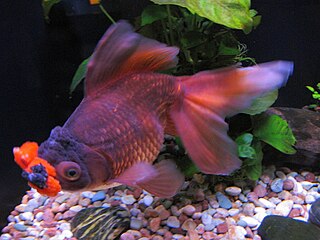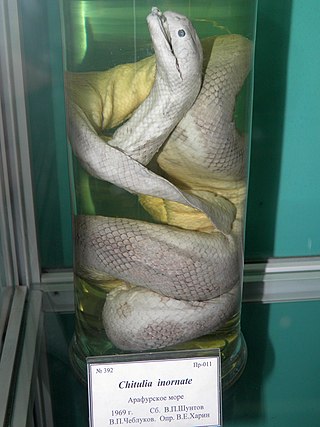
Phrynocephalus is a genus which includes 33 species of small and medium-sized agamid lizards, commonly called toadhead agamas or toad-headed agamas, that inhabit open arid and semiarid environments of Asia and Eastern Europe. The systematics of this genus are very complicated with many controversial points of view about the unclear phylogeny of this group. All representatives of this genus have adopted the so-called "sit and wait" hunting strategy and they actively use visual orientation when watching for food. In general, the ecological niche and role of Phrynocephalus species in lizard communities of arid environments of Asia are poorly studied, but seem to be similar to that of Phrynosoma, Cophosaurus, Holbrookia, Uta, and Sceloporus in the New World, as well as Moloch in Australia.

Urosaurus is a genus of lizards, commonly known as tree lizards or brush lizards, belonging to the New World family Phrynosomatidae.

In phonetics, alveolo-palatal consonants, sometimes synonymous with pre-palatal consonants, are intermediate in articulation between the coronal and dorsal consonants, or which have simultaneous alveolar and palatal articulation. In the official IPA chart, alveolo-palatals would appear between the retroflex and palatal consonants but for "lack of space". Ladefoged and Maddieson characterize the alveolo-palatals as palatalized postalveolars (palato-alveolars), articulated with the blade of the tongue behind the alveolar ridge and the body of the tongue raised toward the palate, whereas Esling describes them as advanced palatals (pre-palatals), the furthest front of the dorsal consonants, articulated with the body of the tongue approaching the alveolar ridge. These descriptions are essentially equivalent, since the contact includes both the blade and body of the tongue. They are front enough that the fricatives and affricates are sibilants, the only sibilants among the dorsal consonants.

Pompoms, pompon or hana fusa are a type of fancy goldfish that have bundles of loose fleshy outgrowths between the nostrils, on each side of the head.

Hydrophis inornatus, commonly known as the plain sea snake, is a species of venomous sea snake in the family Elapidae.

The western long-tailed brush lizard is a species of lizard in the family Phrynosomatidae. The species is native to the southwestern United States and adjacent northern Mexico.

Snakes, like other reptiles, have skin covered in scales. Snakes are entirely covered with scales or scutes of various shapes and sizes, known as snakeskin as a whole. A scale protects the body of the snake, aids it in locomotion, allows moisture to be retained within, alters the surface characteristics such as roughness to aid in camouflage, and in some cases even aids in prey capture. The simple or complex colouration patterns are a property of the underlying skin, but the folded nature of scaled skin allows bright skin to be concealed between scales then revealed in order to startle predators.
The Cameroon racer, Poecilopholis cameronensis, is a species of rear-fanged mildly venomous snake endemic to Africa. Poecilopholis is a monotypic genus created for this species.

Phrynocephalus persicus, commonly known as the Persian toad-headed agama, is a small diurnal desert lizard of the family Agamidae. It is the westernmost representative of the Central Asian genus of toad-headed agamas Phrynocephalus and is only known from deserts and semideserts of Iran and possibly Azerbaijan.

The ornate rainbowfish is a species of rainbowfish endemic to an area in eastern Australia, where it is native to coastal regions and sandy offshore islands in southern Queensland and northern New South Wales. It is the only known member of its genus. It is a popular aquarium fish.

Neosclerocalyptus was an extinct genus of glyptodont that lived during the Pliocene, Pleistocene, and Holocene of Southern South America, mostly Argentina. It was small compared to many Glyptodonts at only around 2 meters long and 360 kilograms.

Phrynocephalus versicolor, the Tuvan toad-headed agama, is a species of agamid lizard found in desert areas of China and Mongolia. It was first described by the Russian herpetologist Alexander Strauch, director of the Zoological Museum at the Imperial Academy of Sciences at St. Petersburg.

Allodelphis is an extinct genus of whale belonging to Allodelphinidae found in marine deposits of the eastern North Pacific.

Phrynocephalus horvathi is a small diurnal desert lizard in the family Agamidae. It is endemic to the valley of the Aras River and considered Critically Endangered.

Asterolepis is an extinct genus of antiarch placoderms from the Devonian of North and South America and Europe. They were heavily armored flat-headed benthic detritivores with distinctive jointed limb-like pectoral fins and hollow spine. The armor plate gives the Asterolepis a box-like shape. Its pectoral fins are also armored but the caudal and dorsal fin are not. The first fossils were named by M. Eichwald in 1840 after noticing star-like markings on the fossils.
Natalie's toad-headed agama is a species of agamid lizard endemic to the Zagros Mountains in Iran. The specific epithet honors Natalia Ananjeva of the Zoological Institute in St. Petersburg, Russia for her contribution to herpetological research of the family Agamidae and Phrynocephalus in particular.
Phrynocephalus clarkorum, also known commonly as the Afghan toad-headed agama and Clark's toad-headed agama, is a species of lizard in the family Agamidae. The species is native to parts of Central and South Asia.













